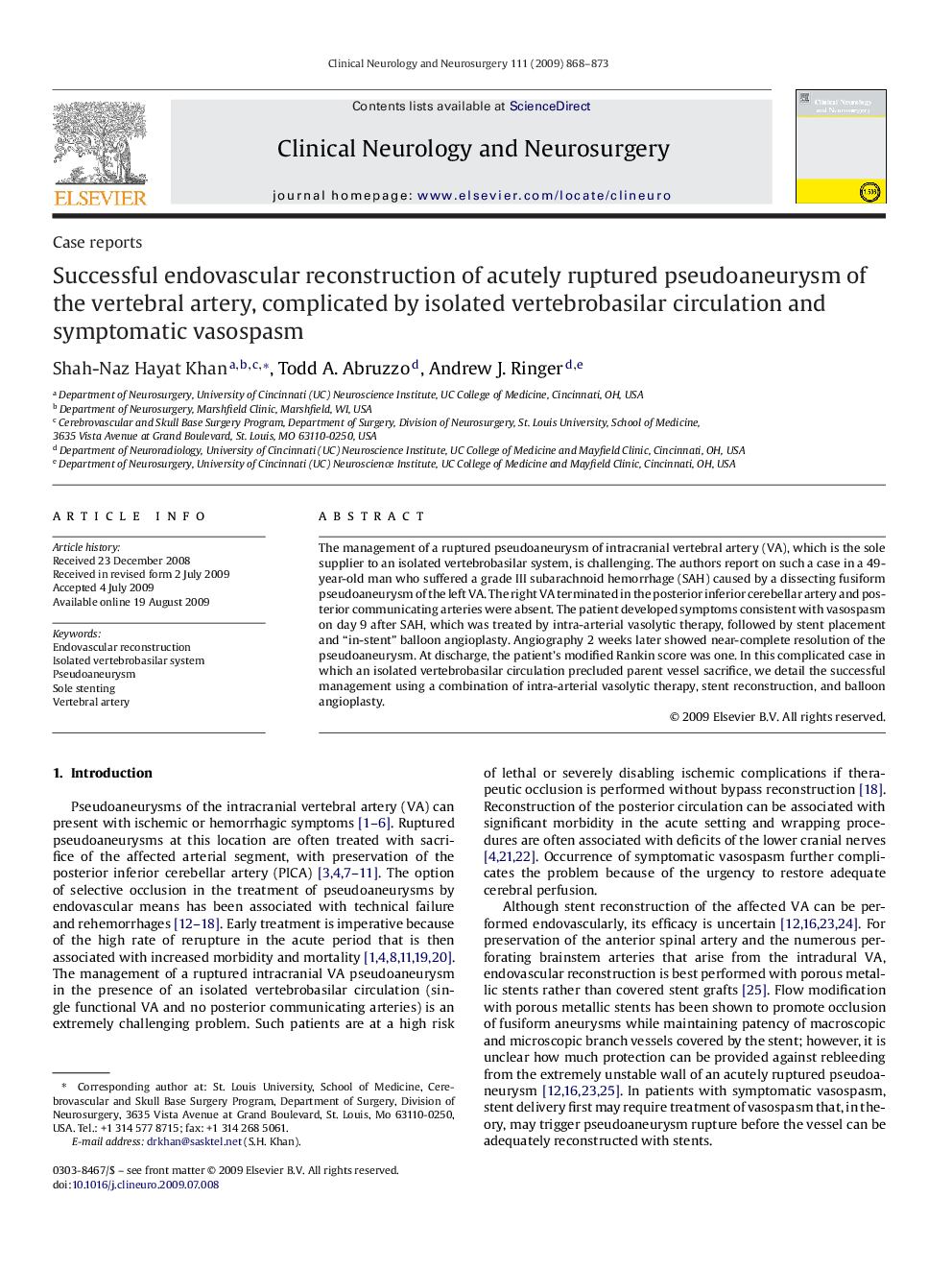| Article ID | Journal | Published Year | Pages | File Type |
|---|---|---|---|---|
| 3041373 | Clinical Neurology and Neurosurgery | 2009 | 6 Pages |
Abstract
The management of a ruptured pseudoaneurysm of intracranial vertebral artery (VA), which is the sole supplier to an isolated vertebrobasilar system, is challenging. The authors report on such a case in a 49-year-old man who suffered a grade III subarachnoid hemorrhage (SAH) caused by a dissecting fusiform pseudoaneurysm of the left VA. The right VA terminated in the posterior inferior cerebellar artery and posterior communicating arteries were absent. The patient developed symptoms consistent with vasospasm on day 9 after SAH, which was treated by intra-arterial vasolytic therapy, followed by stent placement and “in-stent” balloon angioplasty. Angiography 2 weeks later showed near-complete resolution of the pseudoaneurysm. At discharge, the patient's modified Rankin score was one. In this complicated case in which an isolated vertebrobasilar circulation precluded parent vessel sacrifice, we detail the successful management using a combination of intra-arterial vasolytic therapy, stent reconstruction, and balloon angioplasty.
Keywords
Related Topics
Life Sciences
Neuroscience
Neurology
Authors
Shah-Naz Hayat Khan, Todd A. Abruzzo, Andrew J. Ringer,
